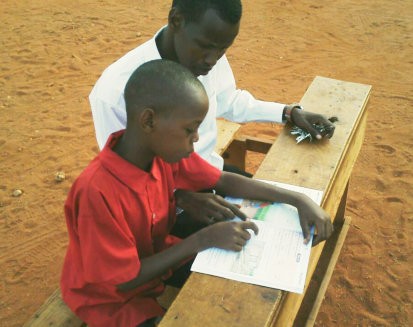
July 2016—“No words can describe how it feels to see pupils who could hardly read become fluent readers,” explains Ibrahim Dakane, a teacher from Wajir County, in the mostly arid and semi-arid areas of northern Kenya. The lowest literacy rates persist in communities largely inhabited by nomadic people.
Even though primary school enrollment rates have increased across the country, attendance does not always translate to improved literacy skills. USAID and Kenya’s Ministry of Education, Science and Technology closely collaborate on the development and implementation of the Tusome (Let’s Read) Early Grade Reading activity because literacy is one of the skills known to help people break the cycle of poverty.
The goal of Tusome is to improve the literacy skills of 5.4 million children who are in the foundational years of primary school in Kenya. By providing books to each pupil and teacher in both English and Kiswahili, using innovative teaching methods, and supporting a sustainable system to provide continual instructional leadership to teachers and administrators, USAID’s Tusome activity is making an impact.
“Improving learning outcomes in early literacy, like the Tusome program is doing, is one of the ways to ensure the future of Kenya’s young generation is bright,” explains Dakane.
One of the teacher’s pupils, Mohammedamin Osman, 7, a Class 1 pupil at Dambas Primary School in Wajir County, explains: “Tusome books are colorful and easy to read because the sentences are shorter and we each have a book to ourselves! Learning is much more fun. I could hardly read more than a couple English and Kiswahili words at the time I joined Class 1 earlier this year. I had limited access to books; we were many in class and had to share the few books available. At home, my parents could not provide much support to improve my reading, writing and speaking skills because they never attended school.”
To date, Tusome has distributed more than 7.8 million English and Kiswahili books in all 47 counties across Kenya. Wajir has received more than 69,000 books for the 604 public and alternative basic education institutions in the county. By 2019, the activity will distribute 16 million books.
“The joy of any teacher is to empower more pupils to achieve their potential,” said Dakane.
Follow @USAIDKenya, on Facebook, on Flickr, on YouTube







Comment
Make a general inquiry or suggest an improvement.